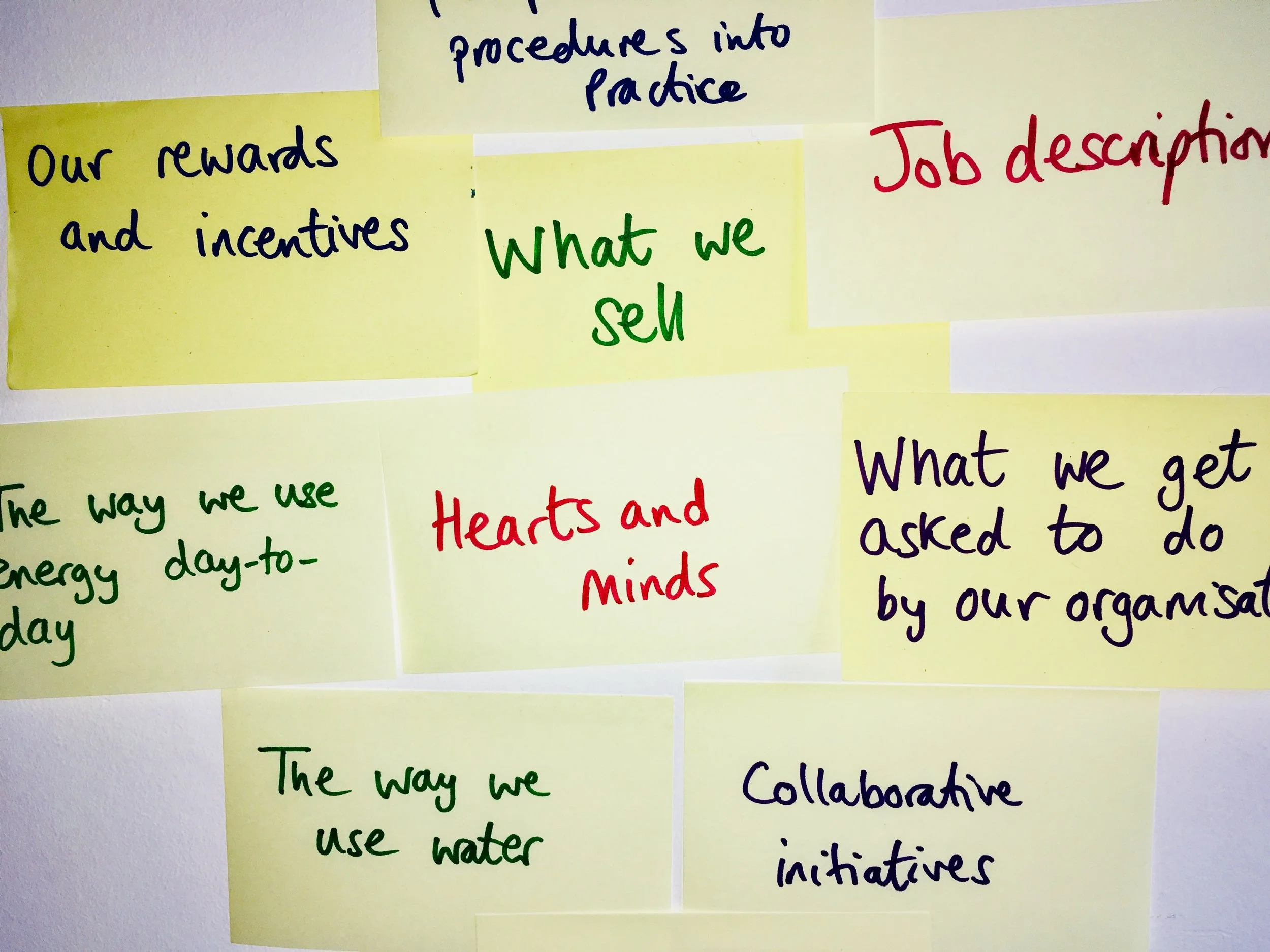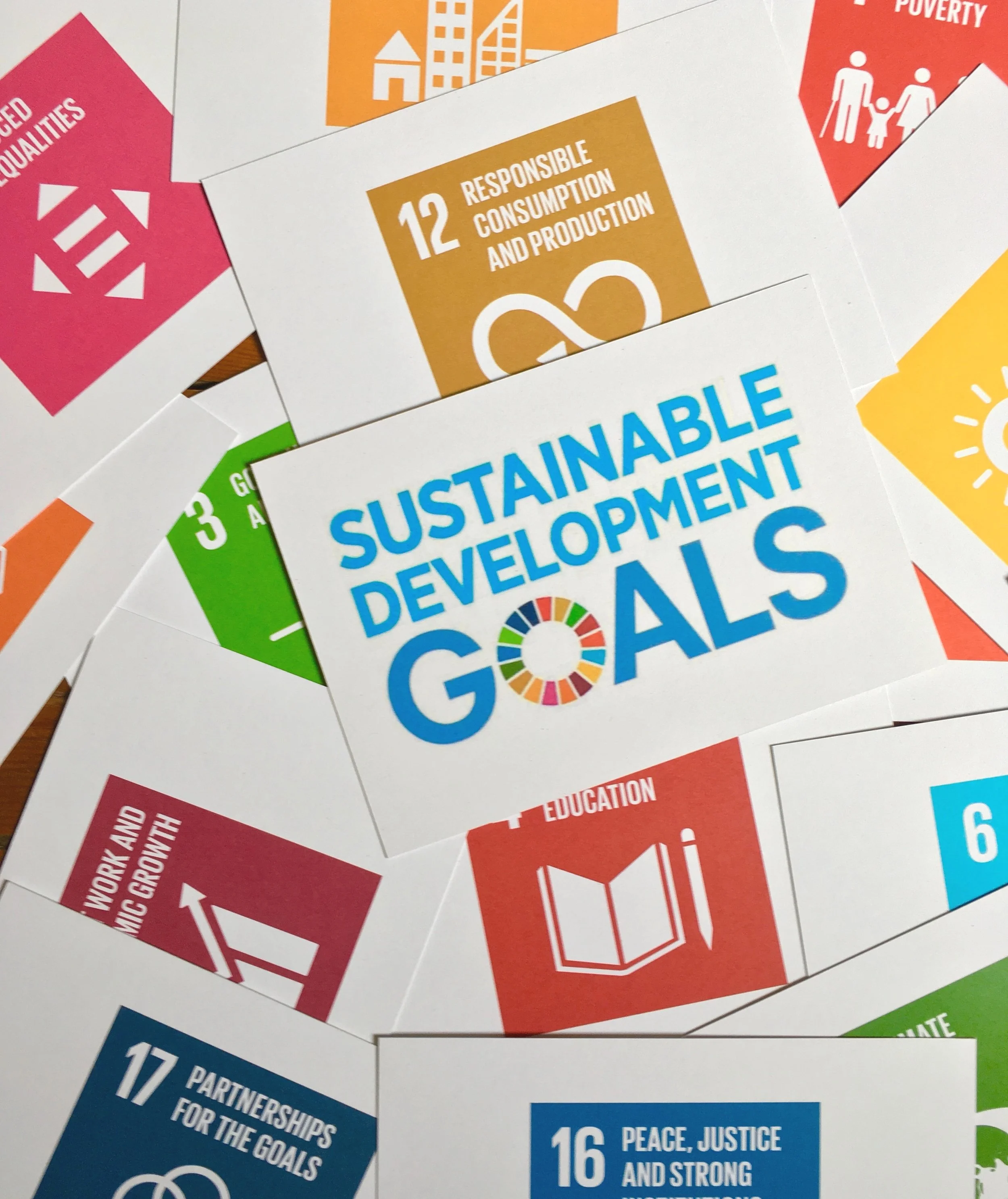Here is a summary of the ORID focused conversation method, as described in Change Management for Sustainable Development.
Change Management for Sustainable Development - downloadable worksheets
Seeing a familiar face, even if it's behind a mask
Lessons from collaborating - #NeverMoreNeeded
The stories we tell ourselves about the climate emergency
The gap between what we say we want, and the way we behave, is such rich territory. We get in our own way – we make excuses for our perceived failures, blame others, or assume too much responsibility. Our internal stories are one of the ways we do this. The stories we tell ourselves about the climate emergency often come back to three strong themes.
Holding the space for climate conversations
How do you feel about the climate emergency? How do you feel about your personal contribution to emissions of greenhouse gases? What do you see in your future?
And if you’re a facilitator, or have some other role in helping other people have conversations about the climate, what do you do when strong emotions show up?
What's your mandate?
What might change, when an organisation changes?
When you think about the changes you want to bring about, to make your organisation or sector more sustainable, what do you see changing? Do you have blind spots about where change might happen, and how deep or how obvious it will be?
Edgar Schein’s Three Levels of Culture model is a great way of understanding what might change, as an organisation or other entity changes. It’s useful to think very widely about the kinds of things that might change – or need to change – to get us on track for sustainable development.
Managing the change to sustainability
Croner-i’s “Environment” magazine asked me to share key insights from Change Management for Sustainable Development. That article is out now, in the spring edition (no. 74).
You can download it here.
Tldr:
Understand where your organisation is now…
How can business contribute to the Sustainable Development Goals?
Businesses - acting alone or, better still, collaborating - can do so much to help society meet the Sustainable Development Goals (or Global Goals).
Whether it’s reducing emissions from travel and energy use, making sure women and minority groups are able to progress, or cutting unnecessary plastic, there is so much to put right. And there are organisations, tools and initiatives to help you.
Find out more in the series of articles I wrote for The Environmentalist. A complete set is available in pdf here.
Peace, justice, partnerships and a strategic approach - 7/7 on business and the Sustainable Development Goals
Work, growth, innovation and equality - Sustainable Development Goals and business
Stonewall and P&G's work to promote equality for LGBT staff in Spain, Rype Office's repurposed office furniture for Public Health Wales, Willmott Dixon Interiors working with the Amber Foundation to help vulnerable youngsters into work... These are just some of the businesses featured in part six of my seven part series for The Environmentalist on how business can help support the SDGs.
Clean energy, thriving cities: Sustainable Development Goals #5
Bringing affordable off-grid renewables to remote communities in developing countries; using cutting-edge data analysis to save money and carbon in modern buildings; micro-managing students' energy use to balance the national grid: some of the brilliant things that are featured in the latest of my series on how businesses are helping contribute to meeting the Sustainable Development Goals.
Sweet like chocolate - protecting Earth's life support systems
In the fourth of my series on business and the Sustainable Development Goals, I found out about how Nestle and Mondelez are working to secure their long-term supply of cocoa, about how companies are calling for greater action on carbon emissions and how the pension fund of England's environment regulator is divesting from fossil fuels. This part of the series looks at Goal 13 Climate Action and Goal 15 Life on Land.
You can see the article over at The Environmentalist's website here. Login if you are a subscriber or an IEMA member, or register for a free trial. If that's not for you, the pdf is here.
Explorer Inge Solheim raised a flag representing Goal 13, Climate Action, in the community closest to the North Pole, to support the UN Global Goals for Sustainable Development. Image c/o Global Goals media centre.
Fresh water, salty water and sustainable resource use - business and the Sustainable Development Goals #3
Free diving world champion Umberto Pelizzari, raised a flag to represent Goal 14, Life Below Water, off the coast of Formentera, to support the UN Global Goals for Sustainable Development. Credit: Enric Sala. http://www.globalgoals.org/media-centre/
In the third of my series on what business can do to support the Sustainable Development Goals, published in The Environmentalist, I look at goals 6 clean water and sanitation; 14 life below water and 12 responsible consumption and production.
I found lots of interesting action - most of which predates the SDGs - and was able to squeeze in impressive strides in reducing water use by Levi Strauss, Maersk Group starting to shift the entire ship breaking sector through its work in India and some head-to-head competition between Tesco and Sainsbury's on reducing food waste. And much more...
You can read the article in its rightful home on The Environmentalist's site here, or if you're not an IEMA member or a subscriber you can download a pdf here.
Give your collaboration some backbone!
All collaborations need a strong, flexible backbone, holding it all together, channelling communication and letting the interesting bits get on with what they’re really good at. I first came across the term ‘backbone organisation’ in the work of US organisation FSG, writing about what they call collective impact, but the need for a central team of some sort has been obvious throughout my work on collaboration. What is the ‘backbone’, and what does it do?
A global purpose: the Sustainable Development Goals and business #2
Business can help society meet the Sustainable Development Goals (aka Global Goals). Find out more about work on hunger, health and quality education.
Thanks to the lovely people at IEMA's The Environmentalist magazine, for the invitation to write this series on business response to the SDGs. It's given me a reason to talk to lots of people doing important work inside lots of businesses and NGOs.
The second article is now out (May 2016), and it covers goals 2, 3 and 4:
You can access the article, and plenty of other environmental news, here, either sign in with your IEMA login, subscribe or take a free trial.
Alternatively, there's a pdf of it here. The first article in the series, giving an introduction to the SDGs and looking at Goal 1 (poverty) and Goal 5 (Gender) is here.
Sustainable Development Goals - what do they mean for your business?
In September 2015, the United Nations agreed a set of 17 Sustainable Development Goals. Covering everything from gender equality to the ecology of the deep oceans, they form a comprehensive description of the key challenges we face in making sustainable development a reality.
The UN sees businesses as a key player in meeting the goals. Why should business bother? And where do you start?
I'm writing a series of articles for The Environmentalist exploring these questions, and the first one is out today (11th February). It introduces the goals, and looks in detail at Goal 1 End poverty in all its forms everywhere and Goal 5 Achieve gender equality and empower all women and girls.
You can access the article, and plenty of other environmental news, here, either sign in with your IEMA login, subscribe or take a free trial.
Alternatively, there's a pdf of it here.
How we do things round here
Organisational culture. Where to begin? Like behaviour change and values, it's one of those phenomena of human experience that promises to unlock sustainability if you can only work out how to harness it, but tantalises by just not being reducible to simple rules or mechanistic predictions.
The canny editorial team over at The Environmentalist invited me to write a two-part feature to introduce IEMA members to this scotch mist, and I love a challenge like that. Even though I know the result will be partial and full of holes, I'd love to help people begin to navigate this treacherous territory with a few useful landmarks.
So I had a go, and part one is available here and part two here.
Essential sources
The research and planning process for the article was fun too, once I'd decided to focus right down on something manageable. (After all, this was for a 1,400 word feature, not a thesis.)
I chose to re-read Edgar Schein's classic Organizational Culture and Leadership. The resulting mind map of notes is two A4 sheets of close tiny handwriting. I also finally got round to properly reading William Bridges' Character of Organisations, which I was introduced to by Lindsey Colbourne (I still have your copy Lindsey!) when she was helping Sciencewise think about designing approaches to public dialogue which match the organisational cultures found in Whitehall Departments and government agencies. Her insightful background research report on the "Departmental Dialogue Index" is here and the summary paper containing the diagnostic tool is here.
Schein's book is wonderful for its stories. I enjoyed being alongside him as a reader, as he gradually realises how little he understands the organisations he is exploring. He opens himself up to not knowing, thereby allowing himself to hear the new (more accurate) interpretations of the behaviours and artefacts. There's something of the anthropologist about him, understanding organisations by being present in them as a participant observer.
Bridges' approach starts from a framework more commonly used to understand the individual - the MBTI's contrasting pairs of judging / perceiving; sensing / intuition; extraversion / introversion; thinking / feeling. He takes this and looks at how it might manifest in organisations.
This is arguably a less intellectually rigorous approach than Schein's. I definitely find myself drawn to the open-endedness and ambiguity of the anthropologist. But there is also something attractively pragmatic in Bridges' work. And the book contains a questionnaire that readers can use to assess an organisation - good for people (and organisations) which like applied theory.
Sharing TUI Travel's journey
Many thanks to Rosie Bristow and Sarah Holloway who took the time to talk to me about how understanding organisational culture within TUI Travel helped them to tailor their sustainability work to be more effective. As well as reading about this in my article, you can see the enthusiastic buy-in they've generated here.















